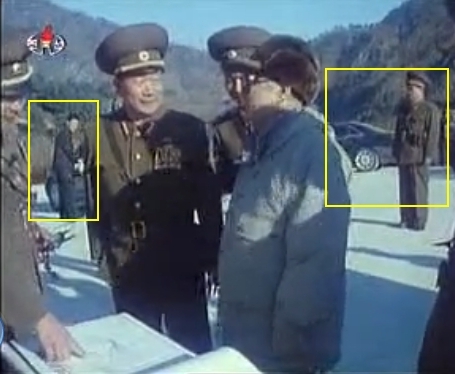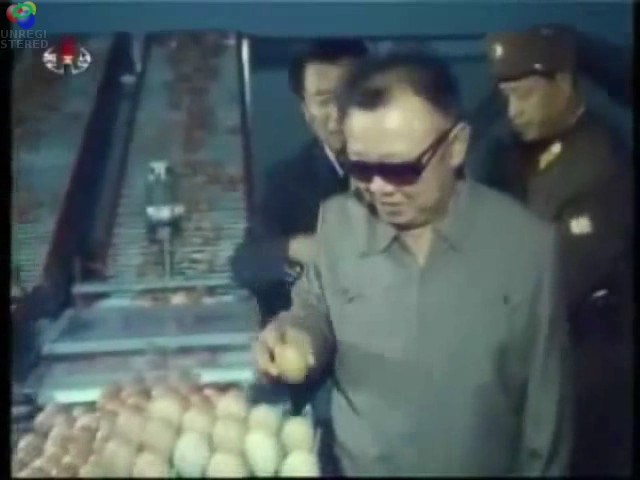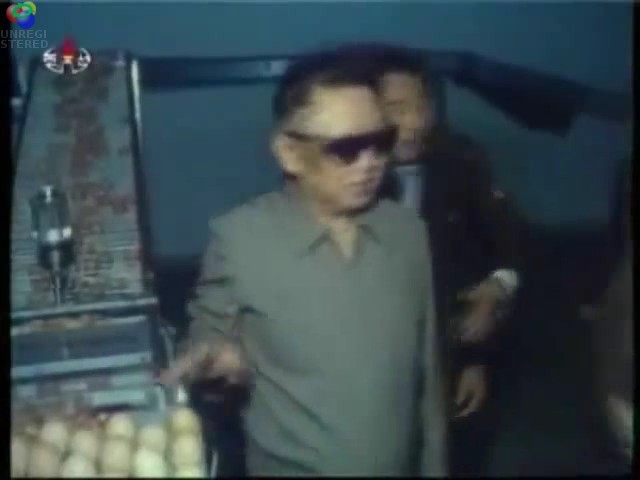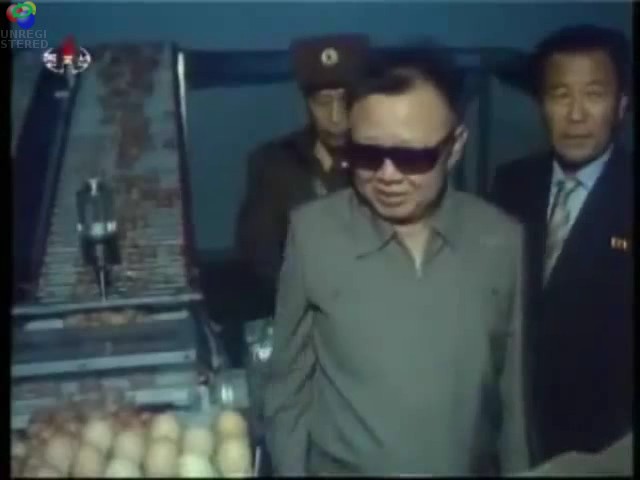Guard Command

Members of the Guard Command and vehicles from Kim Chong-il’s motorcade are highlighted in this image from KCI’s November 2010 visit to the Huichon Power Station in Chagang Province
updated April 29, 2012
The Guard Command (which is also called the General Guard Bureau) is responsible for safety and welfare of Kim Jong Un, his family and senior DPRK officials. With the close protection (i.e. bodyguards) of the country’s leader, as its primary mission close protection (i.e. bodyguard) mission, the Guard Command is similar to the US Secret Service. It has several combat brigades stationed at Kim Family residences throughout the country and is an active internal security agency that conducts surveillance on physical and political threats to the leader. In coordination with the Pyongyang Defense Corps and III Army Corps, it is responsible for defense of Pyongyang and its surrounding area. The Guard Command also provides security to key government buildings and arms factories. Its other responsibilities include: chauffeur service, document delivery, IT support, infrastructure maintenance and construction.
It consists of approximately 95,000-100,000 personnel dispersed across the DPRK into approximately six (6) departments, three (3) combat brigades, several bodyguard divisions, and one construction battalion. Guard Command equipment includes: anti-aircraft artillery,multiple-launch rocket systems, armored combat vehicles, tanks, helicopters, “jeeps, Mercedes limousine buses, and Russian-made Zil trucks” and an unknown inventory of chemical weapons. It controls at least one foreign trading corporation. Guard Command headquarters are located in Moranbong District (Moronbong-kuyok), Pyongyang, approximately 1 mile north of Kim Il Sung Square.
The Guard Command’s #1 Department (a.k.a #1 Unit, 1st Bureau) was responsible for the close protection, transportation, acute medical care and general logistical needs of Kim Jong Il until his December 2011 death. The #1 Department consists of between 6,000-10,000 bodyguards, drivers, engineers and technicians. Of these estimated personnel, approximately 2,000 belong to units comprising the so-called 2.16 Unit, the late KJI’s close protection service. It formally linked with the Main Office of Adjutants, [ii] a bureau of KJI’s Personal Secretariat. The Main Office of Adjutants controlled the inter-service missions with other government and security (State Security, People’s Security, Military Security, Ministry of Railways) that comprised KJI’s outer ring of personal security and responsible for the security and maintenance of the railway and roads that he used.[iii]
After Kim Jong Il’s death, much of the #1 Department’s mission shifted to the protection Kim Jong Un. The Guard Command’s #2 Department provides protection, transportation and ancillary security services to Kim Kyong Hui (Kim Kyo’ng-hu’i) and Jang Song Taek (Chang So’ng-t’aek). [ii] [iii]
The Guard Command’s Security Department manages and monitors all telephone and Internet communications by members of the DPRK leadership. One section of the Security Department is tasked with meeting KCI’s communication needs (telephone, fax, Intra/Inter-net) to issue instructions and orders. In cooperation with the Ministry of People’s Security, the Guard Command’s Security Department also manages the personnel and technical maintenance of hardwired telephone and fax lines used by senior government, party and military leadership in Pyongyang and provincial capitals.
Other departments and sections of the Guard Command are responsible for the security of sensitive or strategic government complexes. Guard Command units of various size and specialty are stationed throughout the capital city.

A member of the Guard Command (R) escorts an overenthusiastic factory manager away from Kim Chong-il (and moving machine parts) during a 2010 visit
The Guard Command is an also an active intelligence organization. The Guard Command has a units that investigate senior party and military leaders and conduct surveillance on DPRK elites. Few members of the DPRK are elite are outside the scrutiny of the Guard Command. Guard Command personnel responsible for the security and logistics of the elite can like wise be mobilized to restrict or prohibit an individual’s or family’s physical movements.
Command and Control
The Guard Command is subordinate to the National Defense Commission, but reports directly to Kim Jong Un via the KWP Administration Department. The current chief of the Guard Command is Gen. Yun Jong Rin (Yun Cho’ng-nin; Yun Cho’ng-rin), who is a member of the Party Central Committee and Party Central Military Commission. Gen. Yun previously served as the Guard Command’s Chief of Staff under its former commander, Yi Ul-sol.
Background
The first incarnation of the Guard Command was established in 1946 for the protection of the early DPRK leadership. From the 1970s to early 1990s, the Guard Command was part of the State Security Department. The corps ranks and number of units were spun-off from SSD and expanded in the early 1990’s. The Guard Command was technically subordinate to the Ministry of People’s Armed Forces, but its command has historically reported through party (KWP) channels.
In the early 1990’s, to address several coup attempts of varying severity, Kim Chong-il revamped his own personal security escort. He dismissed dozens of guard and officials. He expanded his own security detail by 200 officers and called it the 2.16 Unit. Based on observed 2010 DPRK media, uniformed and plainclothes officers of the Guard Command increased their presence at Kim Jong Il’s public appearances.
See also:
Bermudez, Joseph S. “SIGINT, EW, and EIW in the Korean People’s Army: an Overview of Development and Organization,” Bytes and Bullets: Information Technology Revolution and National Security on the Korean Peninsula, Alexandre Y. Mansourov, ed. (Honolulu: Asia Pacific Center for Security Studies, 2005).
Gause, K.E. “Can North Korea Survive the Kim Jong-il Regime?” Korean Journal of Defense Analysis (London: Routledge, 2008).
North Korean Civil-Military Trends: Military First Politics to a Point (Carlisle, PA: Strategic Studies Institute USAWC, 2006)
[i] Although the Guard Command is a service branch linked to the KPA, it is not part of the MPAF or General Staff Department chain of command.
[ii] The Office of Adjutants is headquarted in a building connected to Kim Jong-il’s #1 Office Complex in Central District (Chuk-kuyok), Pyongyang.
[iii] One defector report claims that the Guard Command is responsible for Kim Jong-il’s underground roads and facilities. See “Interview with Former Member of Kim Jong-il ‘Pleasure Squad’” (http://asiamatters.blogspot.com/2010/02/interviews-with-former-member-of-kim.html)
[iv] See “Kim Jong-il Enjoys Art Performance Given by KPA Service Persons,” (http://www.kcna.co.jp/item/2007/200711/news11/17.htm#1) KCNA, 117 November 2007



